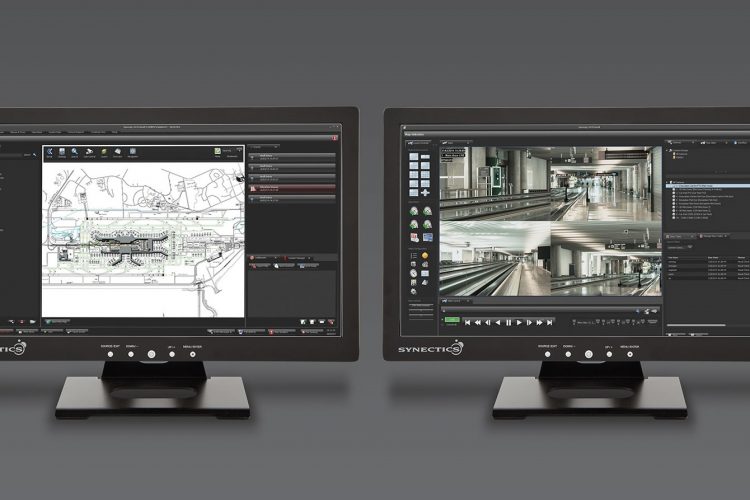Software to improve efficiency, passenger experience, and systems ROI
- Like
- Digg
- Del
- Tumblr
- VKontakte
- Buffer
- Love This
- Odnoklassniki
- Meneame
- Blogger
- Amazon
- Yahoo Mail
- Gmail
- AOL
- Newsvine
- HackerNews
- Evernote
- MySpace
- Mail.ru
- Viadeo
- Line
- Comments
- Yummly
- SMS
- Viber
- Telegram
- Subscribe
- Skype
- Facebook Messenger
- Kakao
- LiveJournal
- Yammer
- Edgar
- Fintel
- Mix
- Instapaper
- Copy Link
Posted: 29 November 2018 | Synectics | No comments yet
Professionals visiting Airport IT & Security 2018 are invited to attend a seminar on how to optimise data from disparate systems in order to boost efficiency, improve passenger experience, and maximise investment in technology.


In line with airport digitisation and unified operational centre trends, the session (14:10, Wednesday 5th December, Hilton Amsterdam Airport Schiphol) will look at how command and control software can be used to integrate and contextualise data from a wide range of systems, sensors, and devices, to deliver airport-wide situational intelligence.
During the ‘Keeping Pace with the Challenges of Security and Operational Efficiency’ seminar, delegates will also learn how inter-operability and automation software capabilities can be used to action intelligence more efficiently.
Leading the seminar will be Greg Alcorn, Divisional Director, Transport & Infrastructure at Synectics ‒ the global surveillance business responsible for developing integrated solutions such as the award-nominated security management platform employed by Terminal 3 at Jakarta’s Soekarno-Hatta International Airport.
He commented:
“Airports have always been pioneers when it comes to trialling and implementing new technologies, from biometrics, video analytics, and security scanning, to automated check-in, and passenger information solutions. But these systems and devices are usually deployed and managed in isolation.
The problem with this approach is that it creates benefit gaps; data from individual systems that could potentially provide greater context and insight simply falls through the cracks. Ultimately, this means airports aren’t getting maximum benefit from the data generated from the technologies they invest in and could be missing out on the opportunity to improve processes key to safety, security KPIs, and ultimately passenger satisfaction.
It is an issue that can be solved by bringing everything together into an integrated and interoperable command and control environment ‒ that’s what this session will explore.”
Synectics (Stand 14) will also be delivering live demonstrations of its Synergy 3 command and control solution. These will show how estate-wide insight gained from unifying data can be paired with software features, such as dynamic workflows in order to help airports implement digitisation and automation strategies, though not necessarily artificial intelligence.
Alcorn explained:
“There’s a lot of talk about how AI can and should be adopted by airports to improve specific operational aspects – especially around security – and it is becoming a valuable tool for operational support. In most cases, however, what’s actually meant is IA (Intelligent Automation), which is good news, because this is being fully deployed right now.
For instance, by integrating live data sources – including responses from operators prompted using questions based on the specific circumstances detected – an inter-operable command and control solution knows to automatically dispatch additional staff to check-in because queues are exceeding specific lengths and a nearby traffic accident is likely to result in a lot of last-minute arrivals.
In an alternative scenario where a child has been reported missing, the solution can recognise the distinguishing factors ‒ such as the colour of a jumper or backpack ‒ to auto-search video footage using analytics. It can then simultaneously present the live footage to control room operators for visual verification, alert the nearest security staff, and push the relevant footage and location to their mobile device.
From a security perspective, automated procedures can be initiated to override access control doors and initiate area lock-downs when facial recognition and ID used don’t match in an authorised personnel-only zone.
This kind of intelligent automation is what’s possible when the right integration, inter-operability, and rules are applied to unified data.”
Visitors to the Synectics stand will also discover how platforms, such as Synergy 3, can be used to help airports collaborate more closely with third parties, for example by supporting secure, real-time evidence sharing and automated communications with emergency services, government agencies, customs units, police, local authorities, and connecting transport providers.
For further information on Synectics’ transport and infrastructure solutions, follow @synecticsglobal on Twitter and/or visit www.synecticsglobal.com.
Related topics
Aeronautical revenue, Airport development, Information technology (IT), New technologies, Passenger experience and seamless travel, Safety, Terminal operations


















